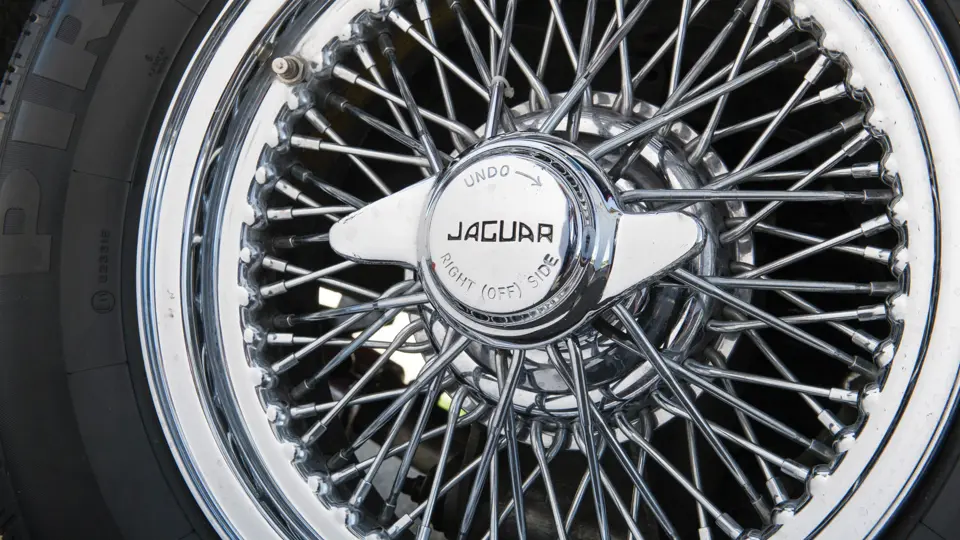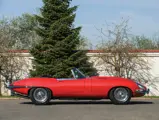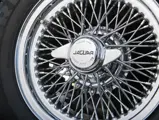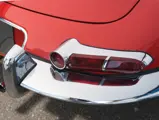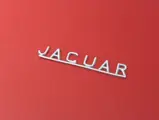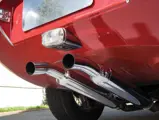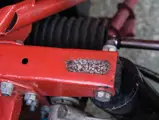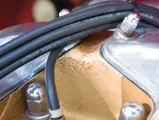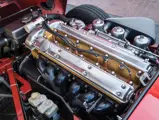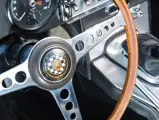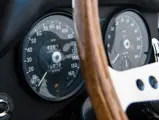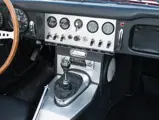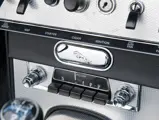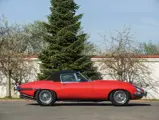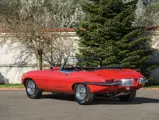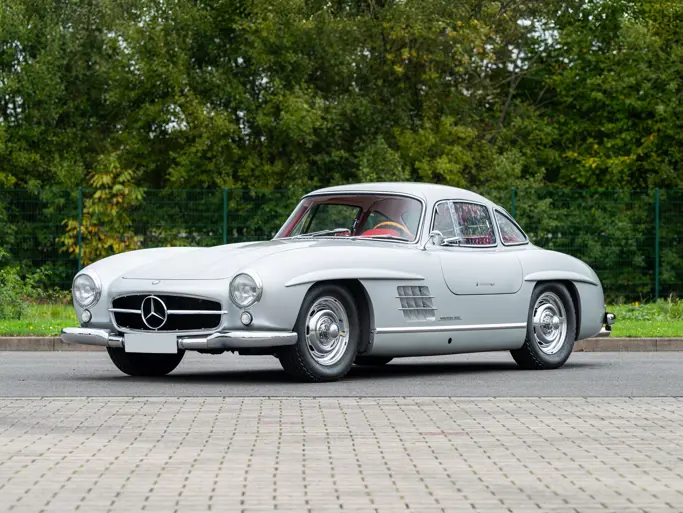
1964 Jaguar E-Type Series 1 3.8-Litre Roadster
{{lr.item.text}}
€123,200 EUR | Sold
{{bidding.lot.reserveStatusFormatted}}
- Desirable Series 1 3.8-Litre Roadster
- Upgraded five-speed transmission
- Well-maintained older restoration
- Desiderabile Roadster 3.8 Litre idella prima serie
- Miglorata con un cambio 5 marce Getrag
- Restauro passato ben mantenuto
265 hp, 3,781 cc DOHC six-cylinder engine with three SU carburettors, five-speed Getrag manual transmission, independent front suspension with double wishbones, torsion bars, and a sway bar, independent rear suspension with coil springs, double wishbones, and a sway bar, and four-wheel hydraulic disc brakes. Wheelbase: 2,440 mm
265 cv, motore sei cilindri in linea da 3.781 cc con doppio albero a camme in testa e tre carburatori SU, trasmissione manuale Getrag a cinque velocità, sospensioni anteriori indipendenti con doppi quadrilateri deformabili, barre di torsione e antirollio e posteriori indipendenti con molle elicoidali, doppi quadrilateri deformabili e barra antirollio e freni a disco idraulici su tutte e quattro le ruote. Passo: 2.440 mm
Jaguar’s E-Type was an immediate hit, from its introduction at the March 1961 Geneva Motor Show until its end in 1974. Autocar said it was a “breakthrough in design of high-performance vehicles”. At its New York introduction a month later, Road & Track called it “every bit as exciting as the XK120 was” at its 1948 debut, whilst Car and Driver succinctly remarked that it was “sensual and elemental”.
This was the first Jaguar not designed by William Lyons but rather Malcolm Sayer, an aircraft engineer turned car designer who had worked on the C-Type and D-Type Jaguars and who would later design the XJ13 racing prototype and the XJS coupé. The E-Type’s theme could be described as voluptuous minimalism, as the car had shapely curves and was almost devoid of ornamentation. In place of a grille, Sayer used a simple oval air inlet that had been bisected by a thin chrome bar. Its bumpers were similarly slight, whilst the headlights were covered in Plexiglas nacelles, which was an aircraft-inspired touch that is still much-loved by purists.
Whilst little is known of the early history of this Series 1 E-Type, it is known that the car was fully restored in 2006. It was subsequently imported into Europe from the United States and has resided there in a prominent collection. This desirable covered-headlamp example looks stunning in its classic red over black leather colour scheme, and its owner has described it as being every bit as nice as the day it was restored. The Jaguar has been driven less than 3,000 kilometres since its restoration, and it would surely make for an excellent touring car, with its upgraded five-speed Getrag gearbox. For additional driving comfort, larger wheels with 205/70x15 tyres have also been equipped.
The E-Type was a remarkable achievement in engineering and design when it first debuted, and this beautiful example carries on the proud Jaguar tradition some 50 years later.
La Jaguar E-Type fu un successo immediato dalla sua introduzione sul mercato nel marzo 1961 al Salone di Ginevra fino al ritiro, nel 1974. Autocar scrisse che si trattava di "un'innovazione nel design delle auto supersportive". Alla presentazione A New York un mese dopo, Road &Track la definì "entusiasmante in ogni aspetto come la XK120", mentre Car and Driver la descrisse semplicemente come "sensuale e semplice".
Questa fu la prima Jaguar che non fu disegnata da William Lyons, ma da Malcolm Sayer, un ingegnere aeronautico diventato disegnatore di auto che aveva già lavorato sulle C-Type e D-Type e che disegnerò più avanti il prototipo XJ13 e la XJS coupé. Lo stile della E-Type può essere descritto come un voluttuoso minimalismo, con linee superlative quasi prive di ornamenti. Al posto della griglia anteriore, Sayer ha preferito una semplice presa d'aria ovale divisa a metà da un sottile profilo cromato. I piccoli paraurti anteriori erano ugualmente piccoli, mentre i fari erano carenati, un tocco ispirato agli aerei e che è tutt'ora molto apprezzato dai puristi.
Sebbene si conosca poco dei primi anni di vita di questa E-Type Series 1, si sa che l'auto ha subito un restauro integrale nel 2006. Fu successivamente importata in Europa dagli Stati Uniti ed entrò a far parte di un'importante collezione. Questo desiderabile esemplare a fari carenati è stupendo nel suo classico colore rosso con interni in pelle nera e il suo proprietario ha definito la sua guida come "eccellente come appena finito il restauro''. Questa Jaguar ha percorso meno di 3,000 kilometri dalla fine del suo restauro e con la sua trasmissione a cinque rapporti Getrag aggiornata, ha tutte le carte in regola per essere un'ottima auto da turismo. Per una maggiore tenuta di strada, sono state montate ruote più larghe con gomma 205/70X15.
La E-Type costituì al suo debutto un grande traguardo sia nel design che nella tecnica e questo magnifico esemplare porta avanti l'orgogliosa tradizione Jaguar anche dopo 50 anni.

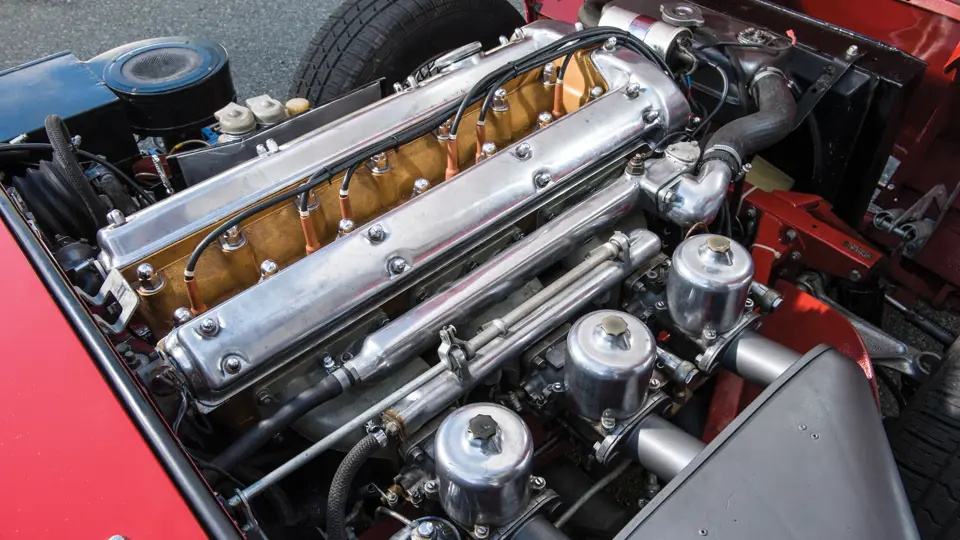


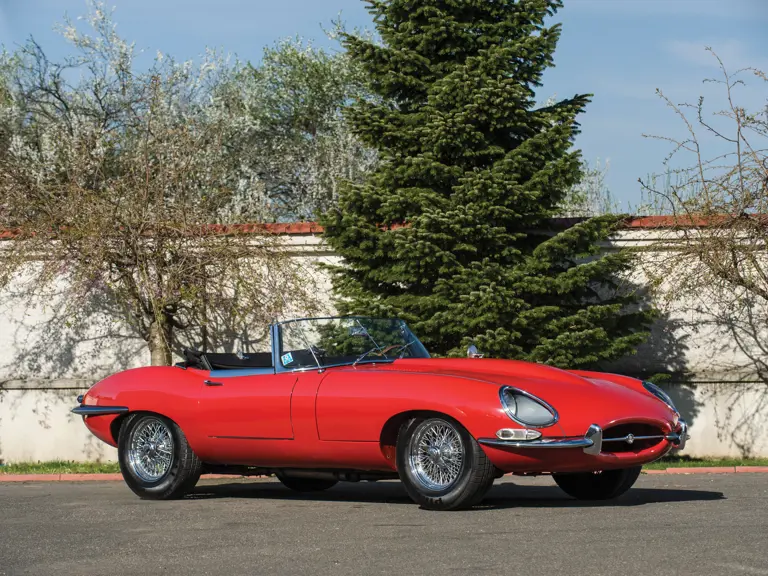
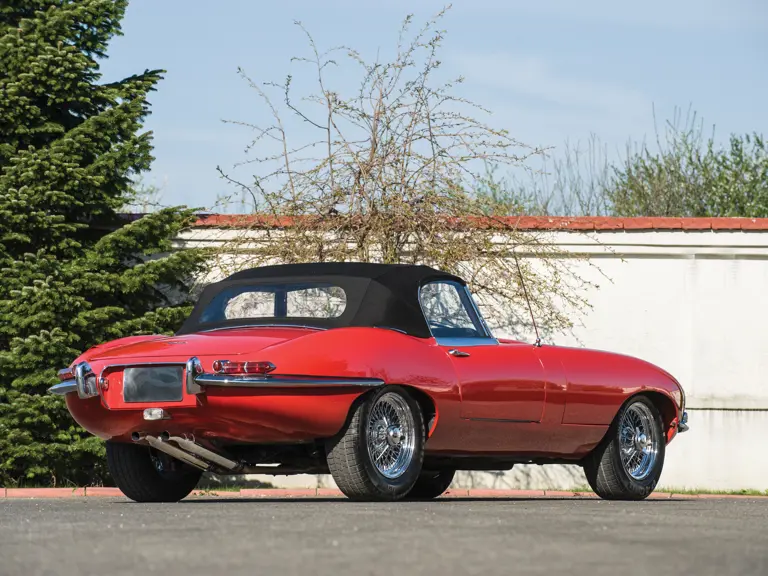


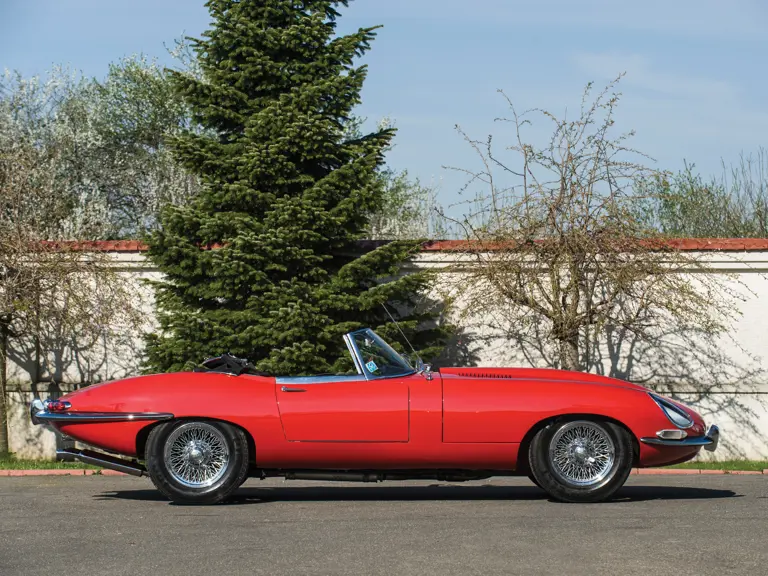

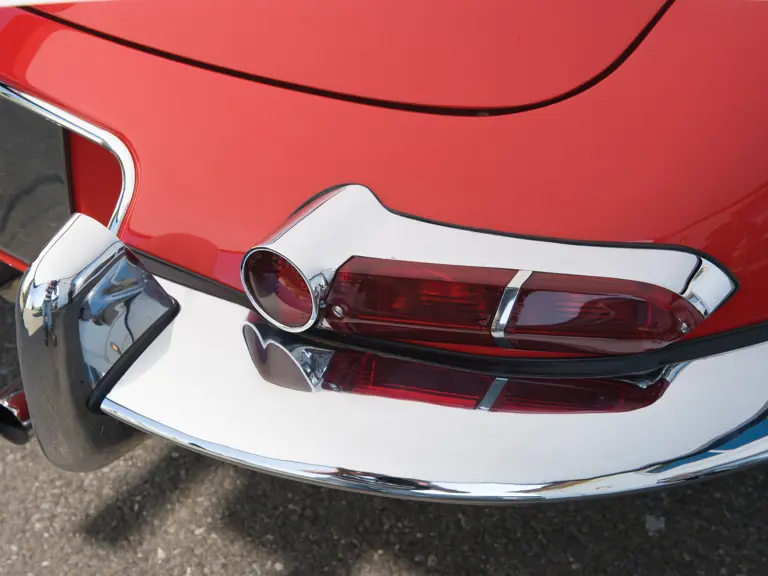
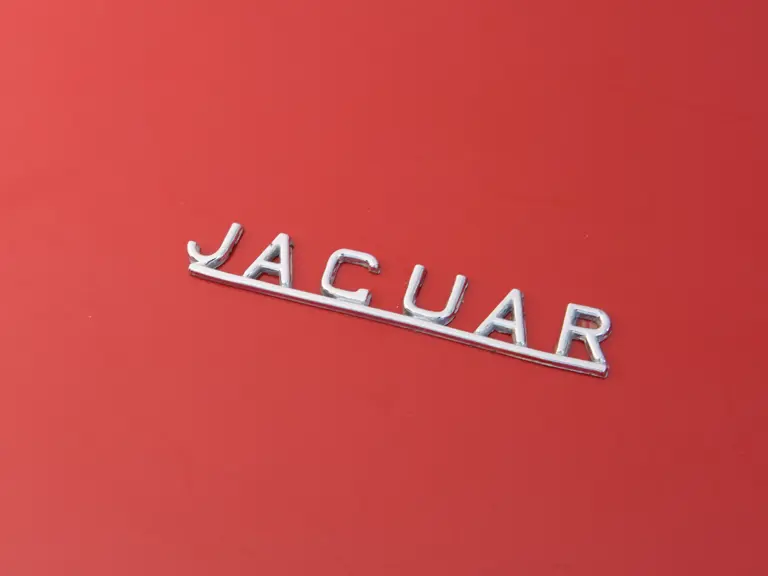
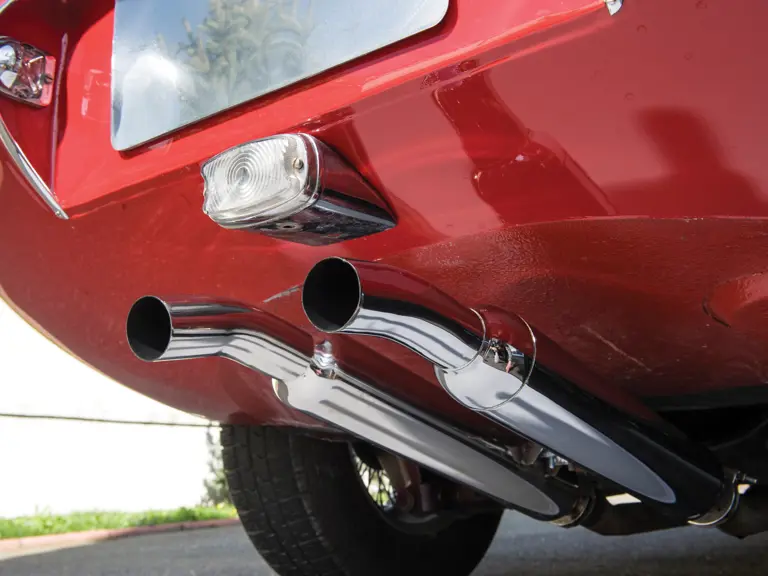



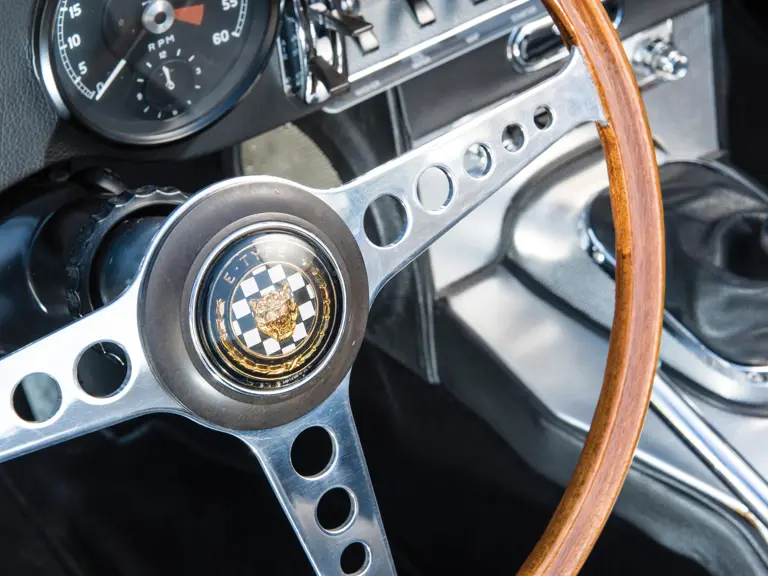
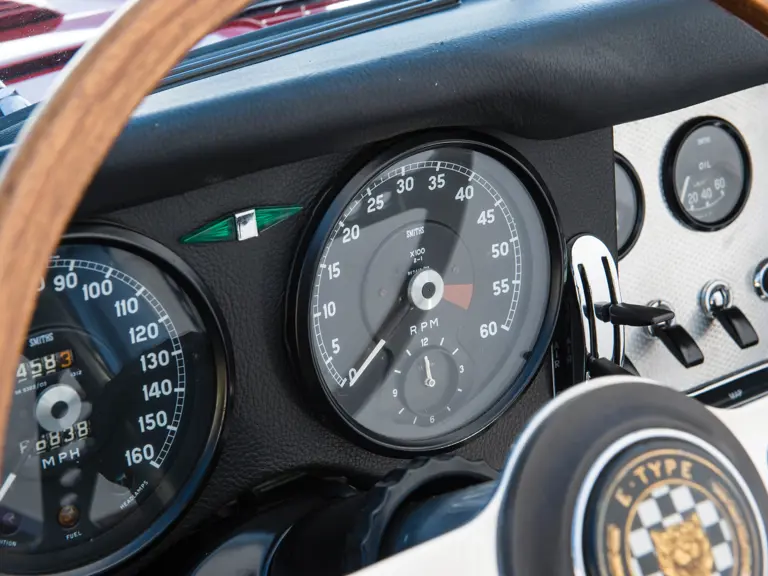
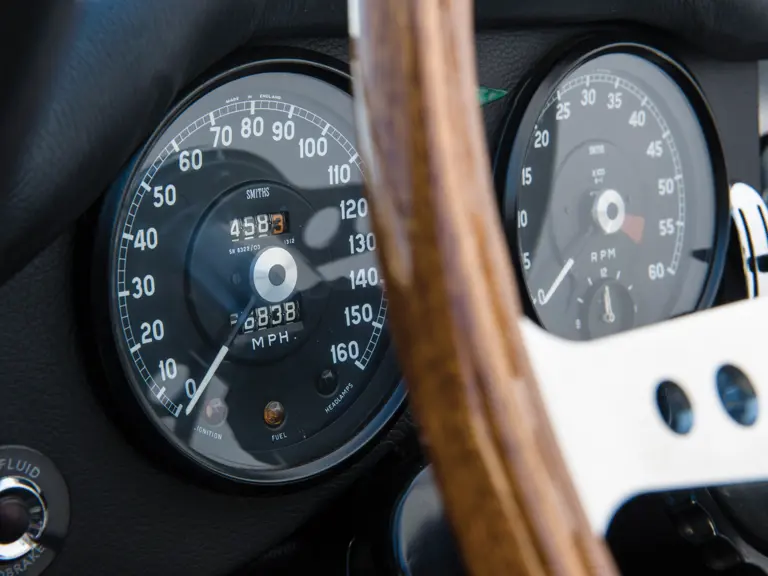
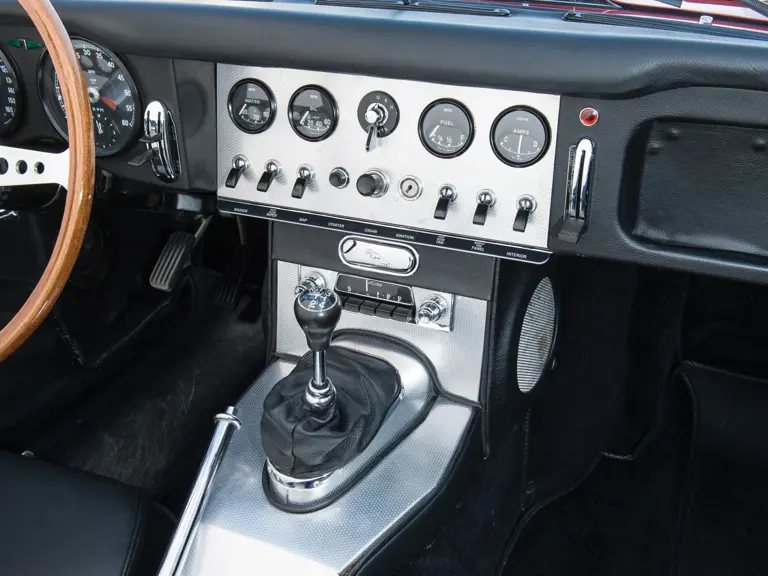
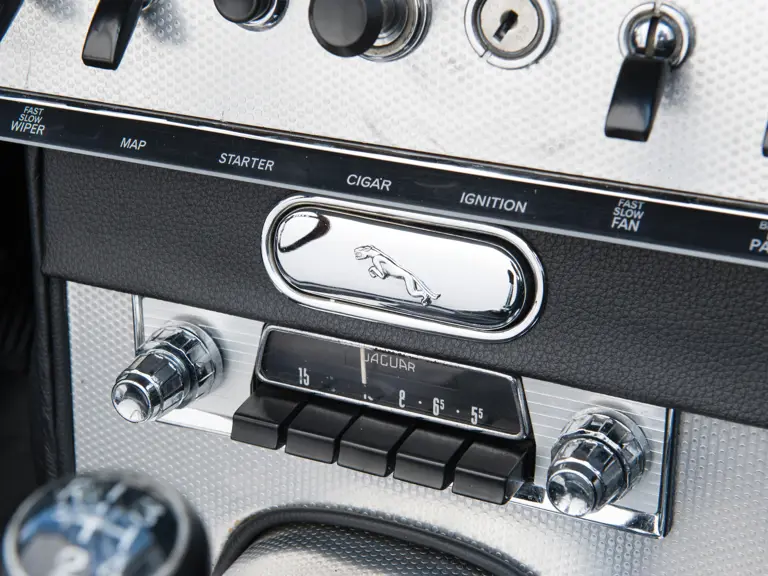

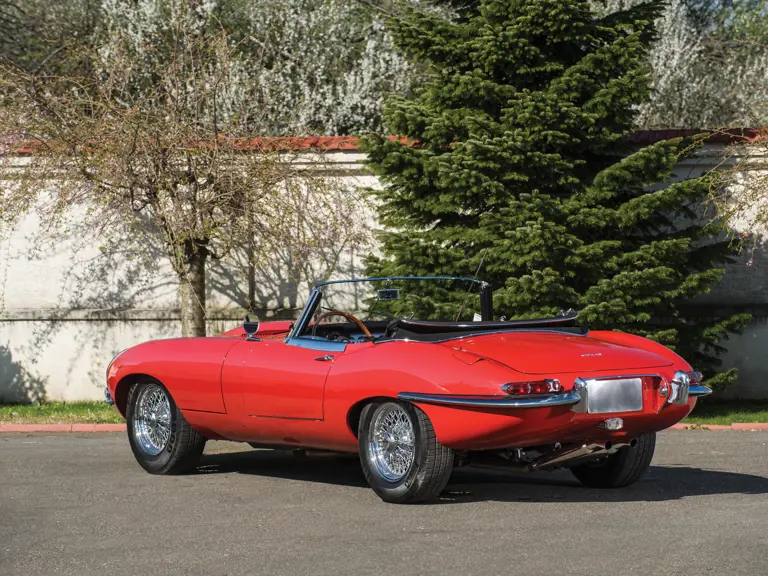
 | Cernobbio, Italy
| Cernobbio, Italy

